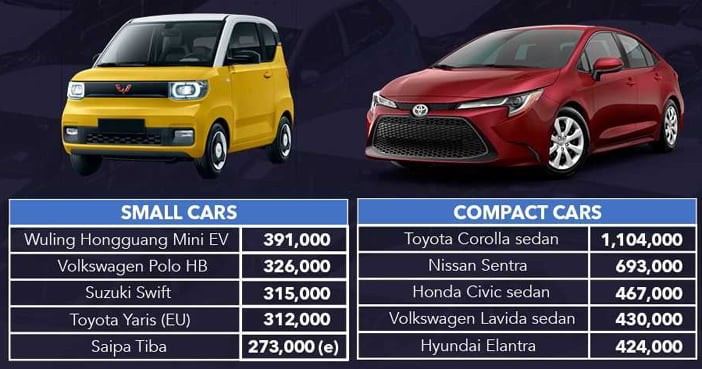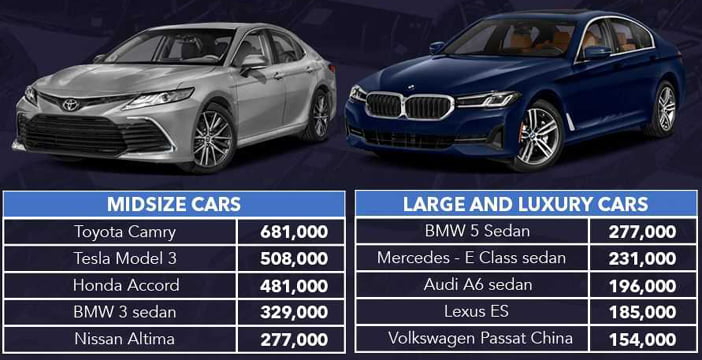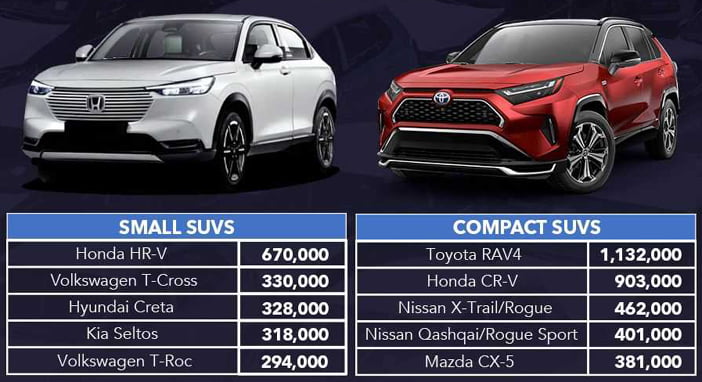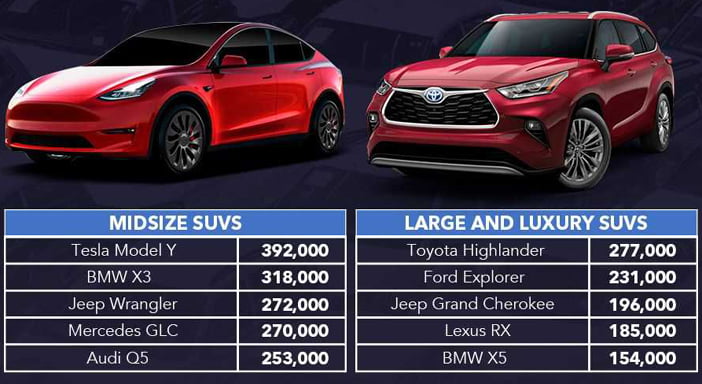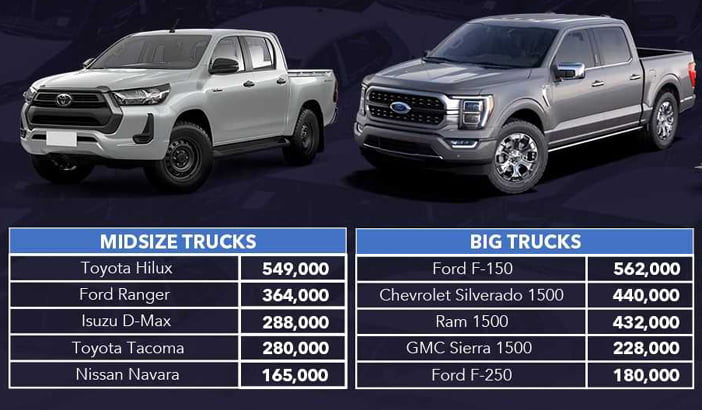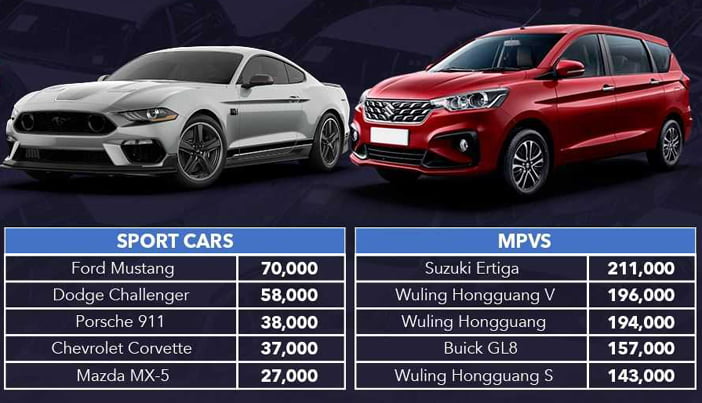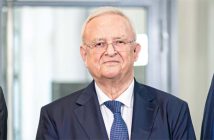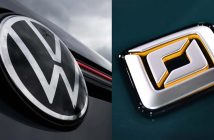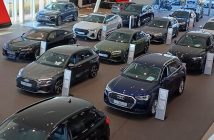+++ AUDI will bid a premature adieu to the Q2 as the baby crossover will be discontinued after only one generation. The A1 supermini will suffer from the same fate because the Four Rings are going to prioritise bigger and more expensive cars. Where does that leave the A3? Well, CEO Markus Duesmann has said the compact vehicle has a future in Ingolstadt’s lineup where it’s going to serve as the entry-level model once the A1 and Q2 will be terminated. “When it comes to the entry level, the A3 or its successor, that will probably be the entry level. So yes, I can commit that from the A3 segment, we will be offering a range of vehicles”. The last part of his statement suggests there’s going to be more than just one model available. It’s unclear whether he was referring to the Sportback and Limousine and/or one of the two body styles combined with the Q3. A crossover in this segment is certainly happening since the recently previewed Cupra Terramar will be built at the same Györ plant in Hungary alongside the mechanically related next-generation Q3. Audi’s head honcho didn’t go into any specifics about which direction the A3 will take, but our logic tells us it’ll be offered exclusively as an EV. The German luxury brand has already announced its last new ICE-powered car is going to be launched in 2025. Meanwhile, the current 4th generation A3 was introduced in May 2020, so it’s going to stick around until 2027 or so. At that point, all newly launched Audis will have been purely electric. Archival Mercedes will cut down on the number of compact offerings from 7 to 4 while a recent report speculates some of BMW’s small ICE-powered vehicles are in jeopardy. The German trio appears to be gradually switching focus to bigger vehicles as even though these are sold in fewer numbers, they have much higher profit margins. Getting back to the A3 at hand, spy shots have revealed a high-riding derivative is on its way, presumably carrying the Allstreet suffix to echo the recently renamed jacked-up A1. A mid-cycle facelift is expected by 2024 and should include the spicy S3 and RS3 as well. Needless to say, the iconic inline-five engine is on its deathbed so you might want to hurry up. +++
+++ Confirming an earlier report, Sony and HONDA have announced the creation of a 50-50 joint-venture aimed at building electric cars. Headquartered in Tokyo, Japan, the company is called “Sony Honda Mobility” and it plans to begin selling cars in just a few short years. Sony and Honda plan to finalize the deal in 2022; the new company still needs to be approved by regulators. Once it’s set up, the 2 partners will bring their strongest assets to the table. Sony boasts a great deal of experience in network, entertainment, sensing, imaging, and telecommunication technologies; it’s the company that brought you innovations like the Walkman and the PlayStation, after all. Honda will contribute decades of car-building expertise. Sony Honda Mobility will begin selling EVs and providing mobility services in 2025. An important detail is that, as of writing, neither party has outlined what the collaboration will spawn. One possibility is Sony will ask for Honda’s help in bringing the Vision-S 02 concept to production. However, the company has previously been hesitant about becoming a carmaker. In 2021, Sony said that “no plans to mass-produce or sell the vehicle”. Has it changed its mind? While this is pure speculation, it’s not too far-fetched to imagine that Sony hasn’t changed its mind and that it will instead focus on what it does best. Imagine a Honda model with a Sony-designed infotainment system. Or, driving aids powered by Sony’s sensing technology. Integrating, say, PlayStation 5 games directly into a car’s software could make a cross-country trip in the middle seats of a CR-V exciting. The emphasis on mobility services is telling, too. This nebulous, overused term means all sorts of different things to all sorts of different people. It can refer to deploying a fleet of electric scooters in a big city, launching a car-sharing service, or something else entirely. More details about the Sony-Honda tie-up will presumably be released in the coming months. +++
+++ JEEP will ramp up the electrification of its line-up with an entry-level SUV to sit below the Renegade. A name for the American brand’s newest model has not been revealed yet and details are scarce, but it is expected to be related to the DS 3 Crossback E-Tense, given the similarities in size and positioning, and the platform-sharing arrangements in place at Stellantis, parent company to both. Pictures of a prototype show a rear exhaust integrated into the bumper, which means that the new Hyundai Kona rival will get a hybrid option, given that Jeep confirmed it will ditch pure-combustion models in Europe from this year. But the model will also be offered as a pure EV, which was shown earlier this year as part of a wide-reaching electrification strategy presentation given by Stellantis boss Carlos Tavares. This will sit on one of Stellantis’s family of new STLA platforms, likely the smallest version, and be closely related to models from sibling brands including the Peugeot e-2008 and Citroën e-C4. Jeep CEO Christian Meunier recently confirmed the company will add a pure-electric model in “every major SUV segment” by 2025, by which point 70% of its global sales will be electrified. Visually, the new ‘baby’ Jeep looks to share similarities with the soon-to-launch Grand Cherokee PHEV, with slim headlights and 4×4-syle chunky wheel arches. Although covered by camouflage, it is also expected to sport the same seven-slat front grille as every other Jeep model – even in electric form. The baby SUV will sit at the bottom of the range, below the Jeep Renegade, as part of a 5-car line-up. Expected to be revealed this year and launched in 2023, it will be one of 100 new products to be launched by Stellantis between now and 2030. Overall, Stellantis will launch 75 new battery-electric models by 2030, and be selling 5 million annually by that point. +++
+++ Tesla boss Elon MUSK seems determined to “solve” self-driving technology. He’s been talking about it for years, though it appears clear that his optimism far exceeds the speed at which Tesla’s engineers can perfect the brand’s Full Self-Driving Capability. However, in a recent interview, the CEO went so far as to say that solving full self-driving is the difference between Tesla being “worth a lot of money or worth basically zero”. Musk may have disappointed some fans and investors recently when he shifted focus to a humanoid robot over Tesla’s vehicle-related ventures. Still, he has continued to emphasise the company’s focus on solving full self-driving. During the recent interview, the CEO reiterated that Tesla’s primary focus is still on “solving” the technology. As you’re probably aware at this point, Tesla is testing its FSD Beta system on public roads with select owners behind the wheel. The company may currently have over 100.000 owners testing the technology in real-world situations. In fact, Musk recently suggested that Tesla was adding 100.000 beta testers, and he’d previously shared that there were already 100.000, so the number may be up to 200,000 at this point. However, Tesla hasn’t shared any official numbers of late. Musk participated in a lengthy interview with a handful of fans, including hosts from Tesla Owners Silicon Valley, The Kilowatts, and, the founder and president of My Tesla Adventure, Eli Burton (otherwise known as Starman). While, commenting on solving full-self driving, Musk said: “The overwhelming focus is on solving full self-driving. That’s essential. It’s really the difference between Tesla being worth a lot of money or worth basically zero”. This comes at a time when the stock market has reportedly entered a bear market, and Tesla’s stock price is far below its all-time high. Despite being the most successful EV maker across the globe by a wide margin and one of the very few automakers to successfully navigate the global pandemic and chip and supply shortage, Tesla’s value has plummeted. +++
+++ Audi has filed a lawsuit in a Munich court against Chinese electric vehicle maker NIO over an alleged infringement of Audi’s trademark rights. According to Audi, Nio’s decision to name 2 of its models ES6 and infringes Audi’s trademark for its own model designations S6 and S8. Nio, a premium brand which so far has made most of its sales in China, entered the Norwegian market in May last year and plans to launch in Germany, the Netherlands, Sweden, and Denmark before the end of the year. The company started sales in Norway with the ES8 model but has said it plans to launch in Germany with the ET7 electric sedan. +++
+++ Unannounced price increases are common at TESLA (and increasingly from other automakers) these days. The latest one took place overnight as Tesla bumped up the asking prices of various versions of each of its models by between $2,000 and $6,000. Here’s a rundown: the Model 3 Long Range went from $54,490 to $57,990 (up $2,500), the Model Y Long Range went from $62,990 to $65,990 (up $3,000), the Model Y Performance went from $67,990 to $69,990 (up $2,000), the Model S Dual Motor All-Wheel Drive Long Range went from $99,990 to $104,990 (up $5,000) and the Model X Dual Motor All-Wheel Drive Long Range went from $114,990 to $120,990 (up $6,000). Those watching closely or considering shopping for a new electric vehicle may already know that the Model S and X already saw major price increases earlier this year. It wasn’t long ago that Tesla charged as little (comparatively) as $69,420 for the Model S. As you can see from the latest increases noted above, the cheapest Model S now costs over $100,000. No reason has been provided for the across-the-board pricing increase, but it’s no secret that raw materials prices and shipping costs (partially due to high fuel costs) have skyrocketed over the course of the year. +++
+++ TOYOTA is responding to critics who say it has been slow to adopt battery electric vehicles, arguing that customer choice dictates the pace of electrification. At its annual general meeting on 15 June, the Japanese giant said that it needs to offer a variety of car choices for different markets and customers and that it will stick with technologies including fuel cell vehicles and hybrids. “The goal is carbon neutrality”, Toyota’s Chief Technology Officer Masahiko Maeda said during the meeting, adding that “customers need to choose” in order to popularise electric cars that include plug-in hybrids. Consumers should have a variety of options available and the automaker should not narrow those down, he said. The comments were made in reply to questions submitted by Danish pension fund AkademikerPension, which also asked Toyota to refrain from lobbying to undermine the transition to battery electric vehicles. Toyota argues that hybrids still make sense in markets where the infrastructure is not ready to support a faster move to battery electric vehicles. The carmaker is also exploring the viability of green fuels for internal combustion engine cars, including hydrogen. Toyota’s pragmatic approach to decarbonisation is at odds with environmental groups’ call for immediate action. Once a favourite with environmentalists for the hybrid Prius it launched more than two decades ago, Toyota has been criticised by some investors for refusing to phase out petrol-powered cars and its lobbying on climate policy. Still, the Japanese automaker has been working to slash greenhouse gas emissions from the vehicle production stage and last year committed to spending $60 billion by 2030 to electrify its cars. While half of that amount is for the development of fully electric vehicles, Toyota expects annual sales of such cars to reach only 3.5 million vehicles by the end of the decade, or around a third of current sales. Toyota recently launched its first mass-produced all-electric vehicle, the BZ4X compact SUV, co-developed with Subaru. Toyota’s Lexus arm will also introduce the all-electric RZ450e later this year. +++
+++ VOLKSWAGEN has revealed it is planning on bringing its sporty GTX moniker to all of its all-electric ID cars, including the new ID.Buzz, which will line-up as a unique proposition: a hot, all-electric minibus. The battery size likely won’t change from the other trim levels so we’ll see the same 77 kWh battery in the ID.Buzz GTX. In the ID.5 GTX, that battery is linked to a 299 hp and 460 Nm electric motor setup. Given the ID.Buzz uses a the same MEB platform to the ID.5, I expect to see similar numbers in Volkswagen’s hot electric MPV. The ID.4 GTX and ID.5 GTX utilise 2 electric motors (one on each axle) to provide 4-wheeldrive so we expect the same in the ID.Buzz GTX. Just like the ID.4 and ID.5 GTX models, range will likely decrease with the battery focusing more on performance. Elsewhere, the exterior will probably feature a few small nods to the added sportiness and the interior should have some red touches as seen on previous GTX models. Volkswagen has confirmed that the new ID.Buzz range will start with the entry-level Life model, But up a level will be the mid-range Style model and then the 1st Edition. The GTX will sit at the top of the range but pricing has not yet been revealed for it. For now, every model in the ID.Buzz range features the same running gear as the ID.3. That means a 77 kWh battery, sending 204 hp and 310 Nm to the rear wheels. This should change with the inclusion of the hot GTX model, as we expect more power and four-wheel drive. Volkswagen claims the ID.Buzz is capable of an all-electric range of up to 415 km. +++
+++ Only now have I been able to compile the data for the full-year 2021, even though we are well into the second quarter. It took me a lot to collect the information around the WORLD , and then classify each model according to the segment. The research includes data for 106 markets from the 5 continents that made up more than 99 % of the world’s total volume last year. These were the topselling models. Elon Musk anticipated it: the Teslas would become the most popular cars in the near future. Well, the Model 3 was not the world’s best-selling car in 2021, but it certainly did a brilliant job by entering the exclusive top 10. According to the figures, this electric saloon occupied the 9th position in the ranking thanks to its strong growth of 40% vs 2020 to 508,000 units. It is also the first time that a fully-electric car goes so far in the sales volumes. The Toyota RAV4, aka Wildlander in China, made history by becoming the first ever SUV to lead the global ranking. The brand sold more than 1.13 million units, up by 6%. It clearly outperformed its closest rival, the Honda CR-V, up by 3% to 903,000 units. Their rival from Nissan, the X-Trail or Rogue, only increased its volume by 0.5% due to the model generation change over. Still, it was able to outsell the Mazda CX-5, Haval H6, Volkswagen Tiguan Allspace and Ford Kuga / Escape. Among the smallest SUVs, the Honda HR-V is by far the star. Its volume increased by 20% thanks to the strong position in China, Latin America, Japan and South East Asia. The closest rival was the Volkswagen T-Cross, but with half of the Honda’s sales. Then came the Hyundai Creta, Kia Seltos and Volkswagen T-Roc. The Toyota Highlander was the most popular midsize/big SUV with 443.000 units, up by 31%. It was followed by the Tesla Model Y, the 19th bestselling vehicle in the overall ranking. Then there was the BMW X3, Ford Explorer, Jeep Wrangler, Mercedes GLC, Audi Q5 and Hyundai Santa Fe. It is interesting to see how the majority of drivers tend to prefer larger cars. The most popular small car last year occupied the 20th position, and it was a Chinese one, the Wuling Hongguang Mini EV. It was China’s top-selling electric vehicle. The second one was the Volkswagen Polo. Next came the Suzuki Swift, the European Toyota Yaris and the Saipa Tiba; an Iranian car for that market. Compact saloons, such as the Toyota Corolla, Nissan Sentra and Honda Civic, are quite popular in North America and China. The hatchbacks are mainly popular in Europe, so that’s why the Volkswagen Golf was so down in the ranking. Actually, the Golf was the world’s top-selling C-Hatch, but occupied the 49th position with 268.000 units. The BMW 3-Series ranked first with 329.000 units, up by a healthy 12% thanks to the strong demand in China, USA-Canada and Japan-Korea. It was followed by its bigger brother, the 5-Series with 277.000 units, and still growing despite its age. Its rival, the Mercedes E-Class was the third best-selling premium car with 231.000 units. Then came the Mercedes C-Class. Among the luxury segments, the Mercedes S-Class led the way by far with 83.000 units vs 46.000 units of the BMW 7-Series. Although the Ford F-150 kept the pick-up crown, it lost ground and was threatened by the Toyota Hilux, up by 22%. Unlike the Ford that sells most of its units in North America, the Toyota is very popular all over the world, especially in the developing markets. The Chevrolet Silverado 1500 and Ram 1500 also lost ground and were out of the top 10. The Ford Ranger, Isuzu D-Max and Toyota Tacoma posted positive variations versus 2020. The Ford Mustang was again the world’s topselling sport car but lost 15% of sales compared to 2020, allowing the Dodge Challenger to challenge it. The Porsche 911 came third, up by a healthy 13%. Chevrolet Corvette demand soared by 53%, leaving the small Mazda MX-5 in fifth position. +++
